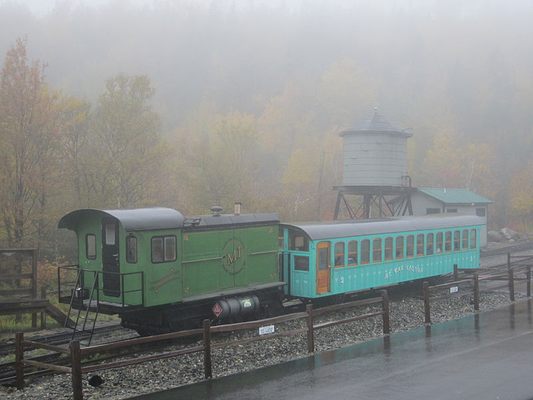About
The Abenaki called it Agiocochook, the home of the Great Spirit.
The first federal survey team named it Mount Washington after the young nation's first president. At 6,288 feet above sea level, the highest mountain in New Hampshire is home to the "worst weather in the world."
Several storm tracks converge over the mountain, and the results are quickly changing dangerous weather. Clear skies provide a spectacular view in every direction, but are very rare. Hurricane-force winds occur at the summit on average 110 days of the year, and most structures near the summit must also be chained to the rock to prevent damage. Over 300 inches of snow on average blanket the mountain every winter, and sleet can occur in summer.
Over 130 hikers have died on this mountain and others in the Presidential Range due to avalanches and underestimating the weather. An observatory near the summit is staffed by full-time personnel and volunteers in eight-day shifts in the tempestuous weather.
Despite the predictably hazardous weather, prepared hikers have a choice of 12 main routes up the mountain, and other visitors may drive up the Mount Washington Auto Road or take a train using the Mount Washington Cog Railway. While the Cog has mostly switched over to biodiesel locomotives, they still run one daily steam locomotive excursion. If you want a unique experience, make sure to plan in advance for it.
At the summit is the Sherman Adams Summit Building with a cafeteria, gift shop, and post office. The Tip Top House, the second stone building at the summit and a former hotel, was recently renovated and is now a historic site.
Known as "the Rockpile" to locals, Mount Washington inspired many artists and writers of New England as its majesty towers above all the land.
“I see the stanzas rise around me, verse upon verse, far and near, like the mountains from Agiocochook…” - Henry David Thoreau, 1841
Related Tags
Community Contributors
Added By
Edited By
Published
May 8, 2013


































































